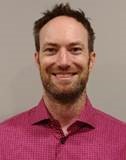
BSc (hons) University of Winnipeg
MSc University of British Columbia
PhD University of British Columbia
My undergrad was in chemical physics from the University of Winnipeg. I joined the group of David Jones at UBC to develop ultrastable femtosecond (1 fs = 10-15 s) lasers. This project morphed into designing and building a high power Ti:Sapphire laser oscillator as a source for high harmonic generation at high repetition rates. I locked this laser to an enhancement cavity (a replica of the laser) to increase the peak intensity while maintaining the characteristics of the laser. For my PhD project, we improved the system to reach field strengths that can ionize atoms, creating a plasma (a mixture of hot electrons and ions) and high harmonics of the laser frequency.
For my postdoctoral work at the University of Ottawa and National Research Council of Canada in Paul Corkum's group, I worked on high harmonic generation. I used space-time coupled optical fields to generate isolated attosecond (1 as = 10-18 s) pulses. These coherent bursts of radiation are as short as the time it would classically take for an electron to orbit around a proton (in the Bohr model of the hydrogen atom).
I also investigated strong light-matter interaction on condensed matter, generating high harmonics from crystals and amorphous materials. Transferring the ideas of strong-field physics from the gas phase (where we could look at ionizing atoms and small molecules) to periodic systems (like crystals) allows us to drive electrons in the conduction band. This electronic motion control is interesting to the fields of attoscience and can be applied to photonics and electronics. We have also developed techniques that can measure the electric field of an optical pulse, useful as a sensitive spectroscopic tool for surface sciences and biology.
I experimentally investigate strong-field physics in periodic systems, an area of research that involves high harmonic generation, femtosecond (1 fs = 10-15 s) science, attosecond (1 as = 10-18 s) science, and spectroscopy.
Strong-field physics requires an intense laser pulse, which is typically at least 1013 W/cm2 (optics people often annoyingly use cgs units). Compare that to the intensity of the sun at the Earth - about 0.1 W/cm2 - and you can see how much brighter these lasers are than light from the sun or a lightbulb. But what we care about is the electric field strength, and the laser pulse is an oscillating electric field. The peak field strength of these lasers is higher than 1010 V/m. This field strength is comparable to the electric field that a valence electron feels in an atom (about 50x1010 V/m). This oscillating electric field from the laser can distort the potential enough so that the electron can tunnel out via quantum mechanics, and we can then coherently control this freed electron. We can measure the electronic motion to tell us information about the electron and how the state of the system is evolving.
In order to take a movie of something, we need to have a shutter that takes a picture must faster than that something moves. In our case, the timescale of an electron is on the order of hundreds of attosecond (1 as = 10-18 s), so we need to make a pulse of light that short. We can't take a picture of an electron to say where it is exactly (thanks to quantum mechanics and the Heisenberg uncertainty principle), but we can measure a distribution of where it is. In attosecond science, we take several attosecond snapshots at slightly different times to make a movie of what this distribution is doing.
The technologies that we've developed for attosecond science in atoms are now being applied to periodic systems such as crystals, or tailored and nanofabricated materials. The accuracy of the measurements allow for attosecond resolution of electron dynamics and resolving light waveforms.
Electromagnetism; lasers; classical mechanics; experimental physics.
I try to incorporate Python into my courses and assignments, and I encourage everyone to try to build things with Arduinos.
